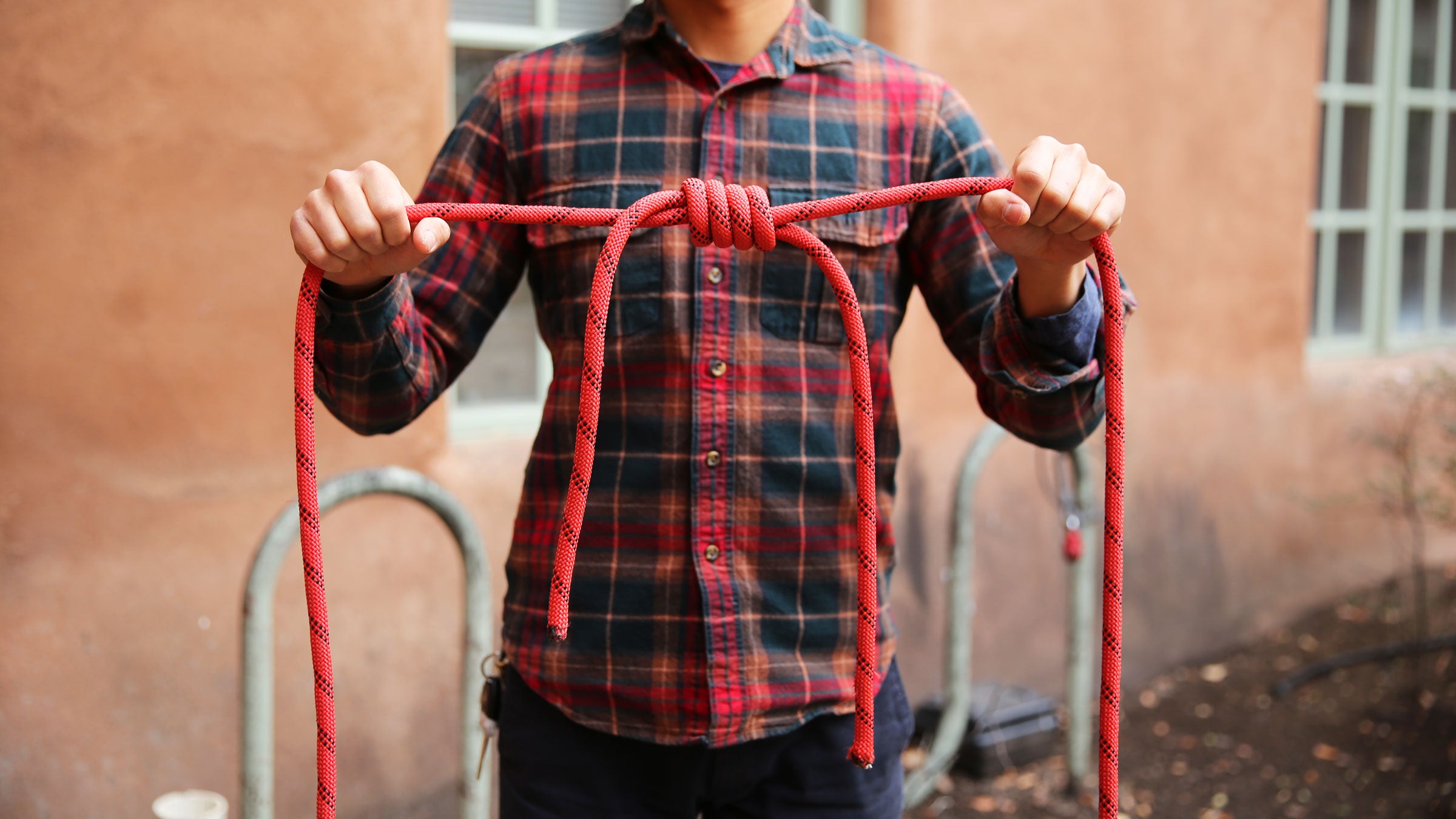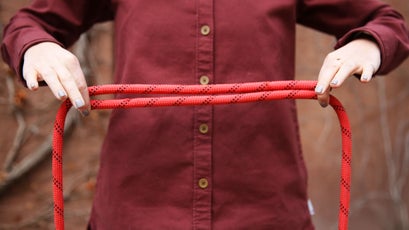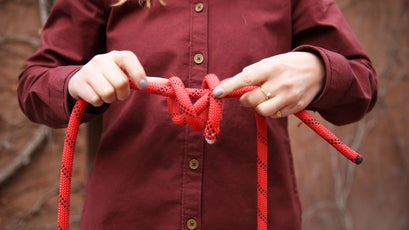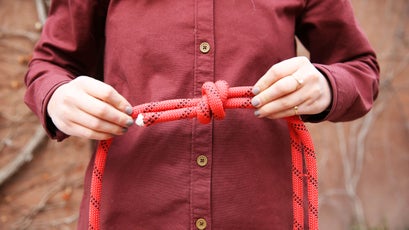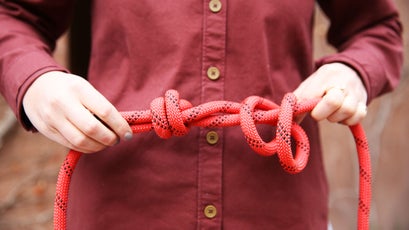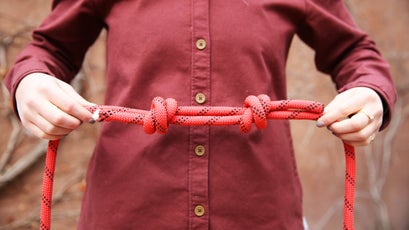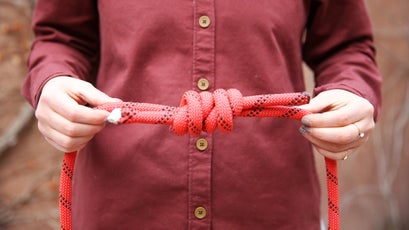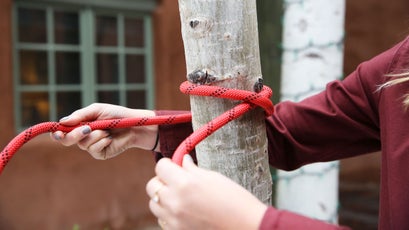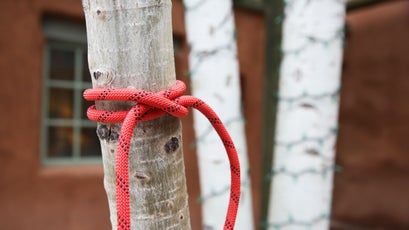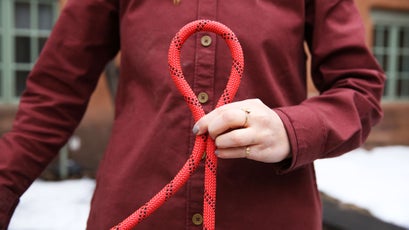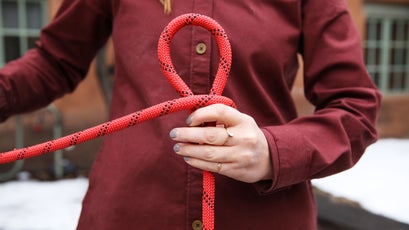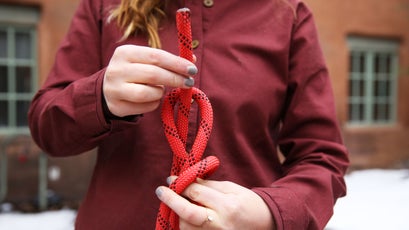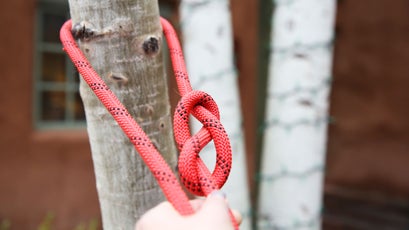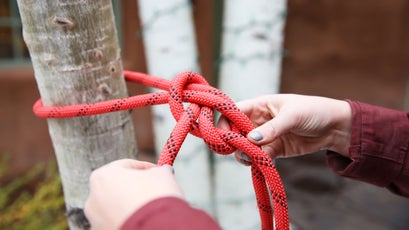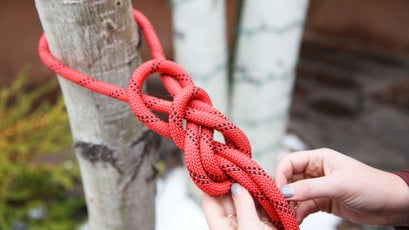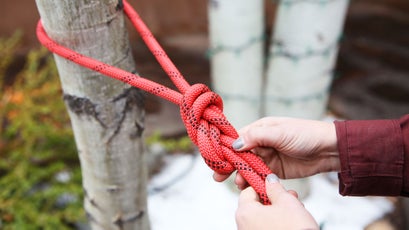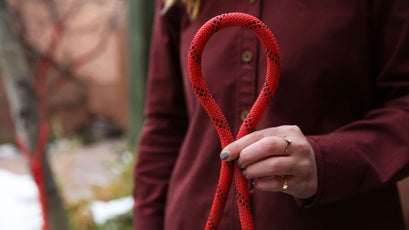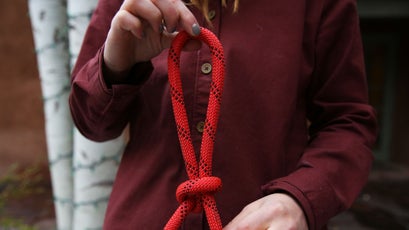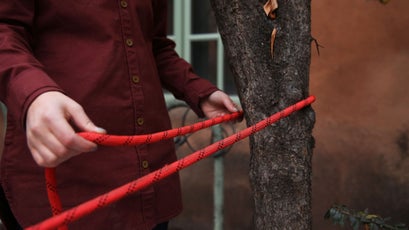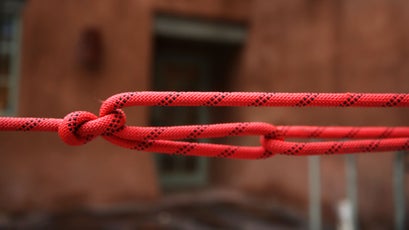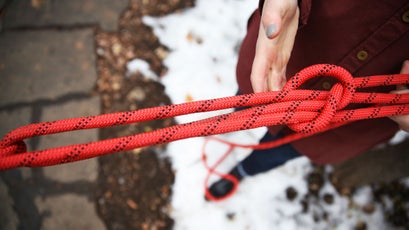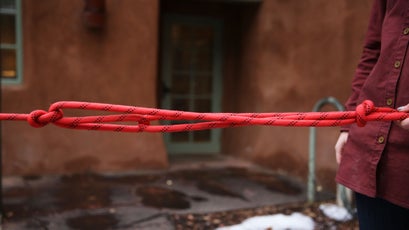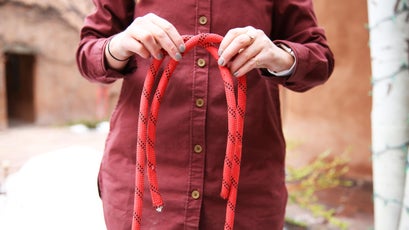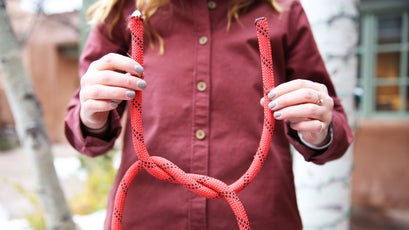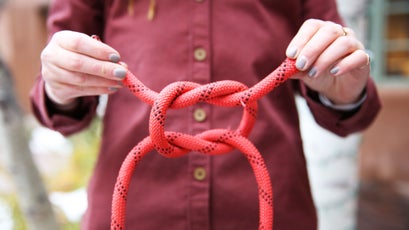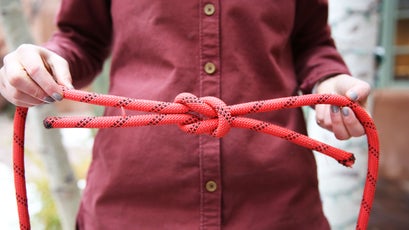From and basketry to fishing and even medical applications, knots have myriad uses. Hell, Mayans even worked them into math, utilizing�� to record numbers. You might not be performing hard calculations with them, but learning these five important knots can serve you well on your next outdoor adventure.
#1. Double Fisherman’s Knot
Use
This knot��joins two ropes of equal diameter together.
Directions
Lay the ends of the two ropes so at least one foot is running parallel to each other. Coil one of the ropes around the other rope twice, then feed the end back through the coils you just made. Pull this knot tight.��The coils��should form an X��on top of the knot��with about three to four inches of tail. Now��rig the same knot with��the second rope, attaching it to the first rope above the first knot��and again making sure the coils create an X. Pull both knots tight for a clean Double Fisherman’s knot.
#2. Clove Hitch
Use
This knot is useful for quickly attaching a rope to a post or another stationary object. You’ll commonly��find this knot in rock climbing to attach a climber directly to an anchor.
Directions
Start by wrapping the free end of the rope around the post. Cross the rope over itself and around the post again in the same direction. To finish the knot, slip the free end of the rope under the��wrap you just made��and pull tight. If you’ve done this knot right, you should see two parallel pieces of rope with a perpendicular rope running over them.
#3. Figure-Eight Loop
Use
This knot is the standard to tie into a harness while rock climbing. It makes a secure loop at the end of a rope.
Directions
Start by making a loop about four feet from the end of the rope, passing the free end over the standing rope from left to right, running the end back underneath it from right to left, and then down through the loop you created. At this point, you should have a standard figure-eight knot with two to four feet of tail. If you’re securing the rope to an object, pass the loop around it now. Next, retrace your original figure-eight knot with the free end of the rope. When you’re done, pull all four strands tight.
#4. Trucker’s Hitch
Use
This knot is great for securing items to your car’s roof rack or tying out tent guylines. It affords you a three-to-one mechanical advantage��to maximize your energy—the force you exert by cinching down is multiplied by three through the knot.
Directions
Start by securing one side of the rope to your fixed object, such as a car bumper or a fixed loop on your tent body,��with a weight-bearing knot like the figure eight, above. About halfway down the length of the rope, make a loop and push a bight of rope through it, then pull the loop tight around the bight. That should leave you with a fixed loop and half of your rope still free. Next, pass the free end of the rope around another fixed point—such as a tent stake or car bumper—and pass it back through the fixed loop created by the bight you previously pulled through. Pull the free end through as far as you want to tighten the load to your desire, then tie a figure eight around both ropes��to finish it off.
#5. Square Knot
Use
The most common knot on this list, the square knot’s��regular use is��combining two ropes together. This knot should not be considered weight-bearing, but it can be extremely helpful around camp.
Directions
Lay both ropes parallel to each other, with the loose ends running in opposite directions and at least six inches of rope on both sides. Start the knot by crossing the right strand over and under the left once. To finish the knot, cross the left over and under the right once, and pull all four strands tight at the same time. The ends of each rope should be on the same side when you’re done.


